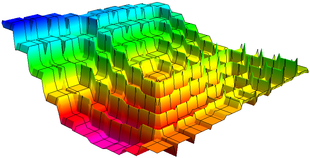10-327/Homework Assignment 6: Difference between revisions
| Line 35: | Line 35: | ||
I remember that when proving the homeomorphism in question 2 there is another intricate argument for continuity that is |
I remember that when proving the homeomorphism in question 2 there is another intricate argument for continuity that is |
||
not the standard definition in our topology class? Sorry Dror I am sort of lost of what to do for this assignment...[[User:Xwbdsb|Xwbdsb]] 00:36, 13 November 2010 (EST) |
not the standard definition in our topology class? Sorry Dror I am sort of lost of what to do for this assignment...[[User:Xwbdsb|Xwbdsb]] 00:36, 13 November 2010 (EST) |
||
Also what is the generalized limit? I search for this idea in the book but I didn't find anything. I think in the book before we understand Stone-Cech compatification theorem we need to understand what a regular space is and also we need to understand one-point compactification? Isn't Stone-Cech compatification just a special way to compatify the some topological space so that the continuous function with uniquely be extended to the compatification? [[User:Xwbdsb|Xwbdsb]] 00:58, 13 November 2010 (EST) |
|||
Revision as of 00:58, 13 November 2010
| ||||||||||||||||||||||||||||||||||||||||||||||||||||||||||||
Reading
Read sections 37-38 in Munkres' textbook (Topology, 2nd edition). Remember that reading math isn't like reading a novel! If you read a novel and miss a few details most likely you'll still understand the novel. But if you miss a few details in a math text, often you'll miss everything that follows. So reading math takes reading and rereading and rerereading and a lot of thought about what you've read. Also, preread sections 30-33, just to get a feel for the future.
Doing
Solve and submit the following problems.
Problem 1. Problem 1 on page 235 of Munkres' book.
Problem 2. Show that is homeomorphic to the cantor set .
Problem 3. Show that any function from the integers into a "cube" has a unique continuous extension to .
Problem 4. Use the fact that there is a countable dense subset within to show that the cardinality of is greater than or equal to the cardinality of .
Problem 5. Show that the cardinality of is also less than or equal to the cardinality of , and therefore it is equal to the cardinality of .
Problem 6. Show that if and if is the corresponding generalized limit, and if is a bounded sequence and is a continuous function, then .
Problem 7. Show that there is no super-limit function defined on bounded sequences of reals with values in the reals which has the following 3 properties:
- .
- .
- , where is "shifted once": .
Due date
This assignment is due at the end of class on Thursday, November 18, 2010.
| Dror's notes above / Student's notes below |
Hi Dror, how do we prove some set has smaller cardinality to another set? I mean what do you mean by that? Why in problem 5 it says that the cardinality of a set is less or equal to another set so that the cardinality are the same? Xwbdsb 00:25, 13 November 2010 (EST)
Also I am wondering what is the super-limit because it wasn't done in class and it is not covered in the book too??Xwbdsb 00:36, 13 November 2010 (EST) I remember that when proving the homeomorphism in question 2 there is another intricate argument for continuity that is not the standard definition in our topology class? Sorry Dror I am sort of lost of what to do for this assignment...Xwbdsb 00:36, 13 November 2010 (EST)
Also what is the generalized limit? I search for this idea in the book but I didn't find anything. I think in the book before we understand Stone-Cech compatification theorem we need to understand what a regular space is and also we need to understand one-point compactification? Isn't Stone-Cech compatification just a special way to compatify the some topological space so that the continuous function with uniquely be extended to the compatification? Xwbdsb 00:58, 13 November 2010 (EST)

![{\displaystyle [0,1]}](https://wikimedia.org/api/rest_v1/media/math/render/svg/738f7d23bb2d9642bab520020873cccbef49768d)







![{\displaystyle I^{A}=[0,1]^{A}}](https://wikimedia.org/api/rest_v1/media/math/render/svg/99f33088165d29d0d5a1afeb41724bf50de0f30e)













